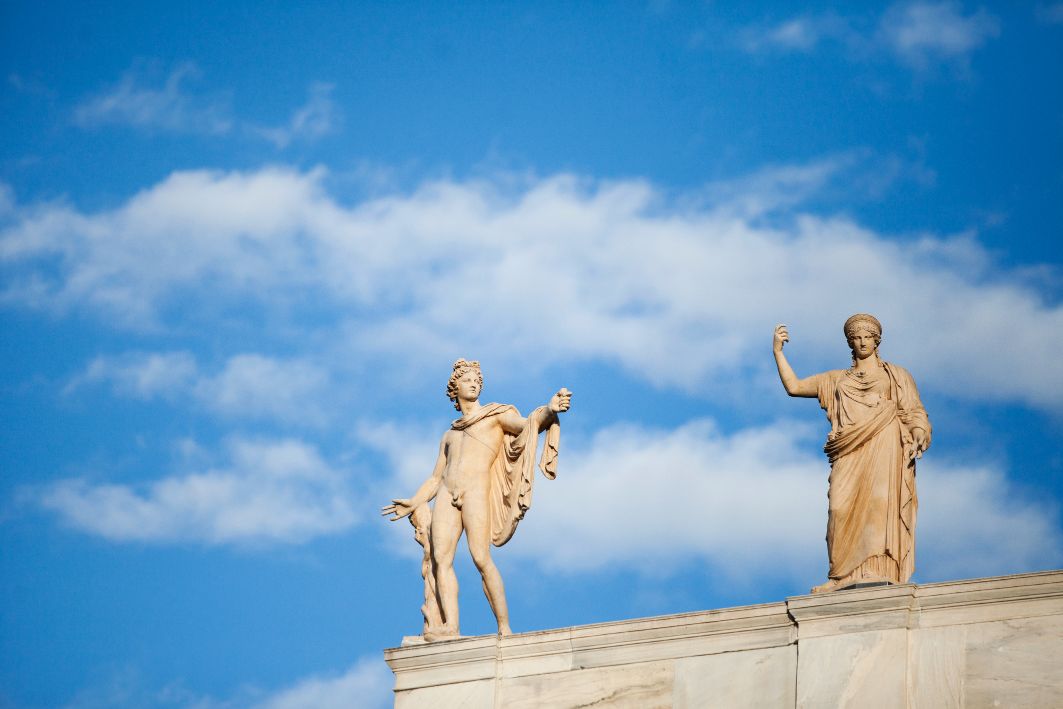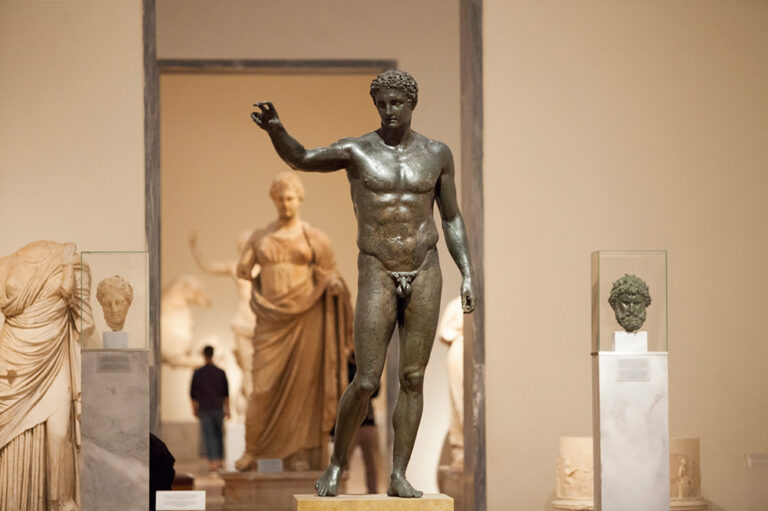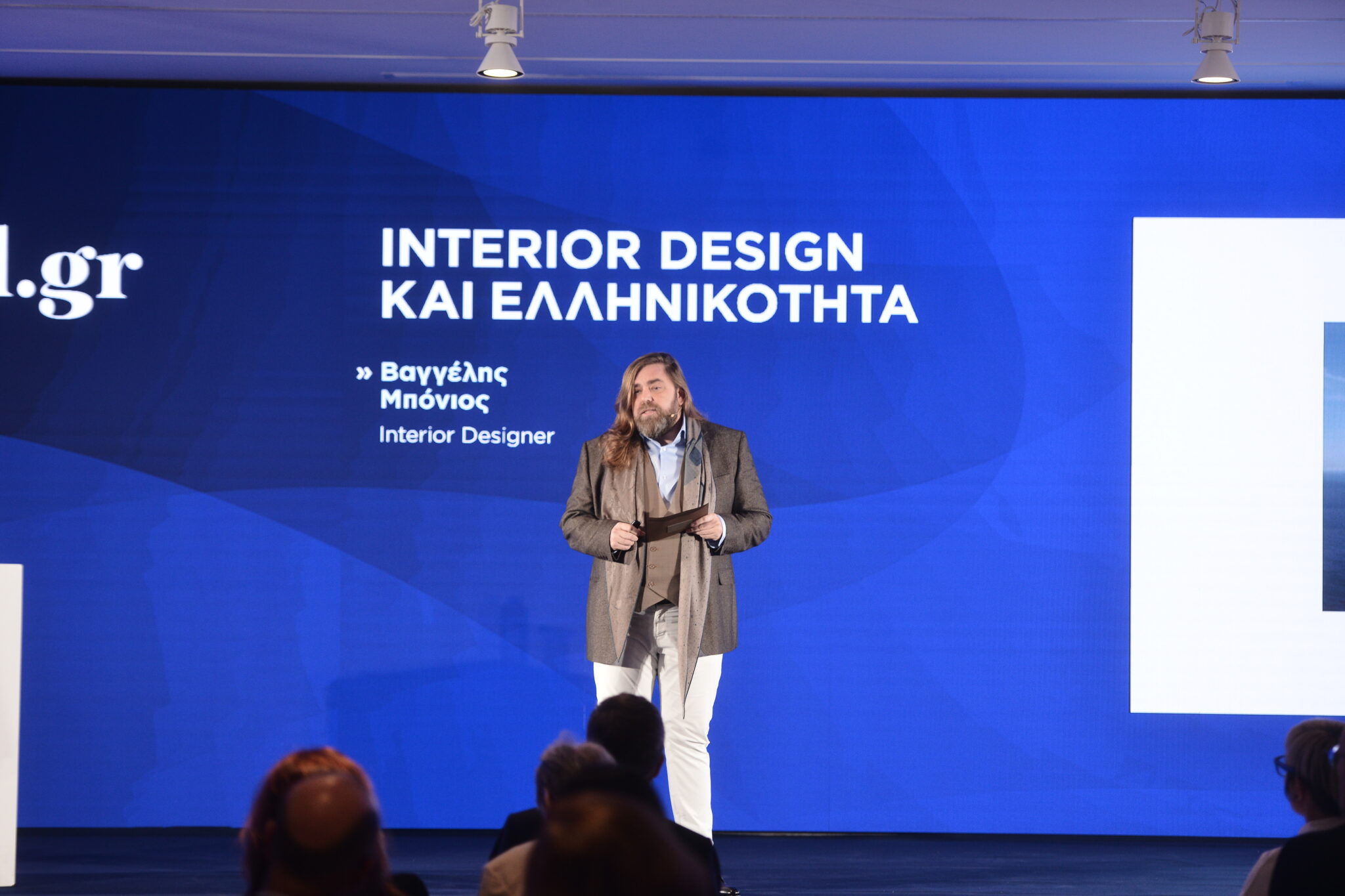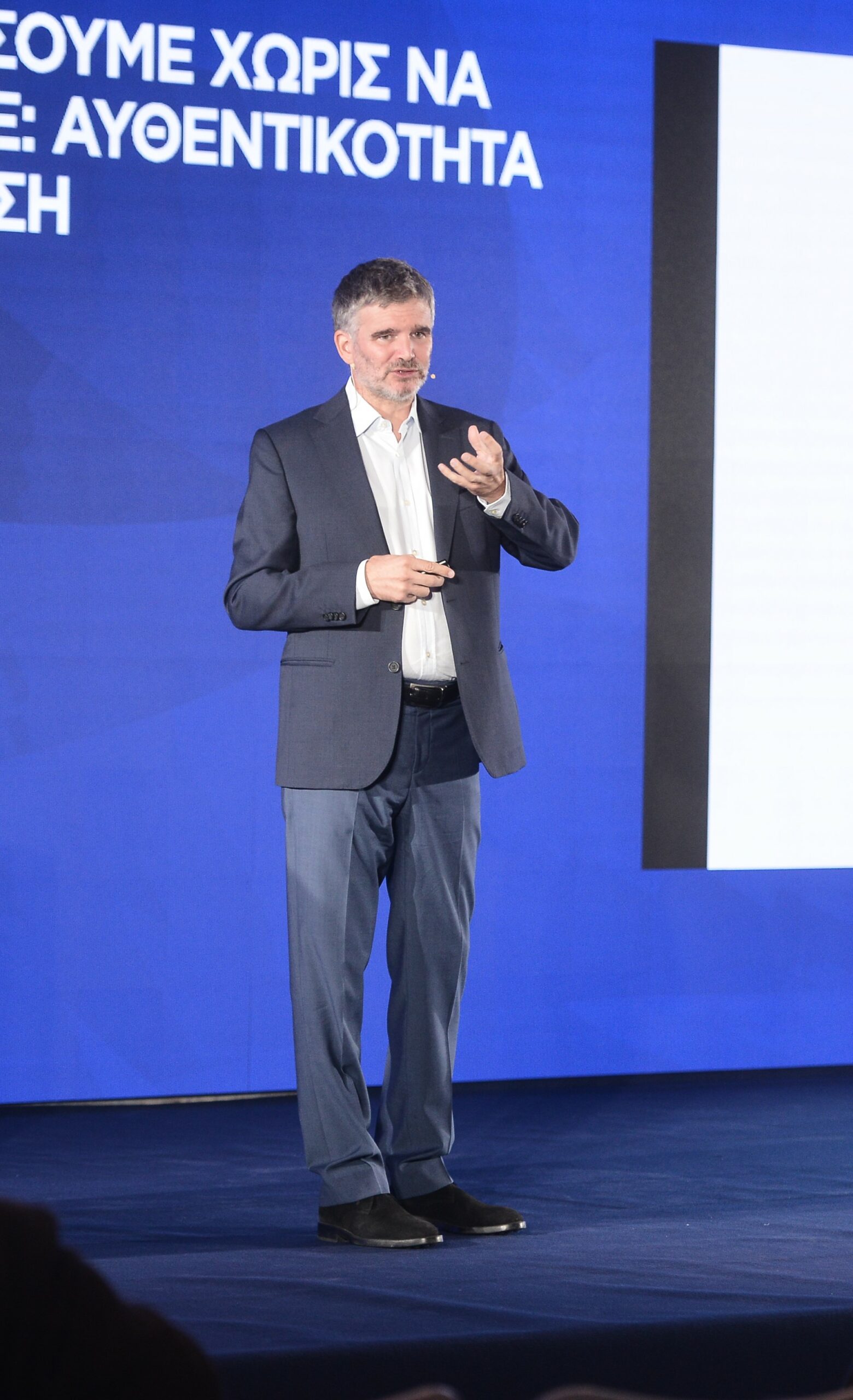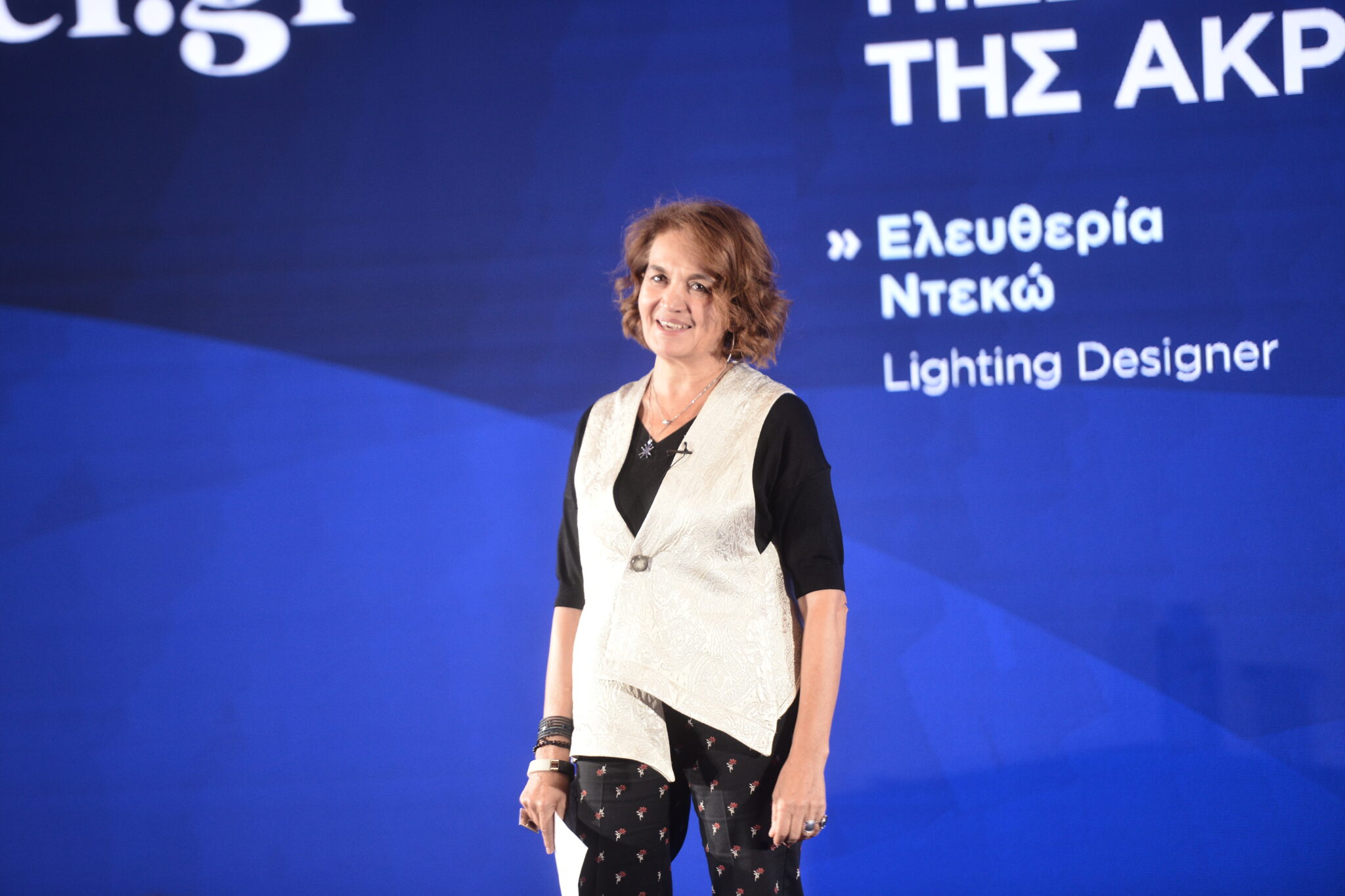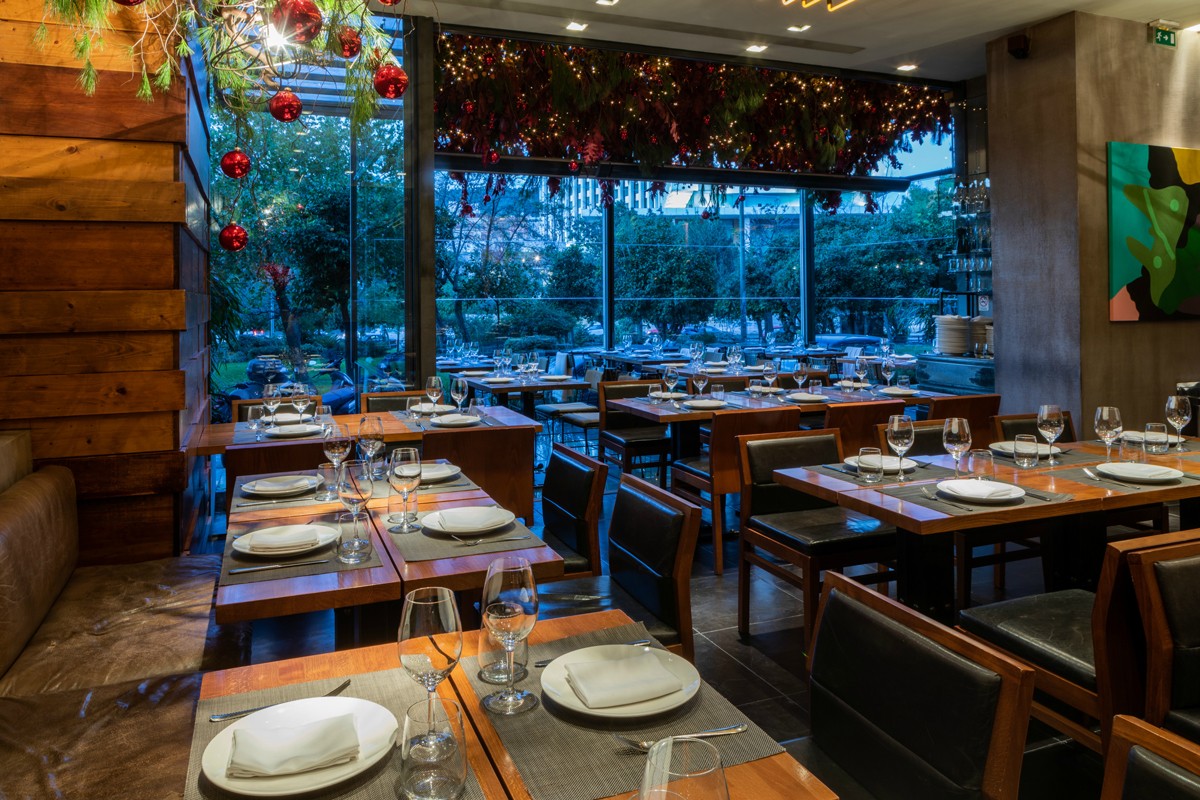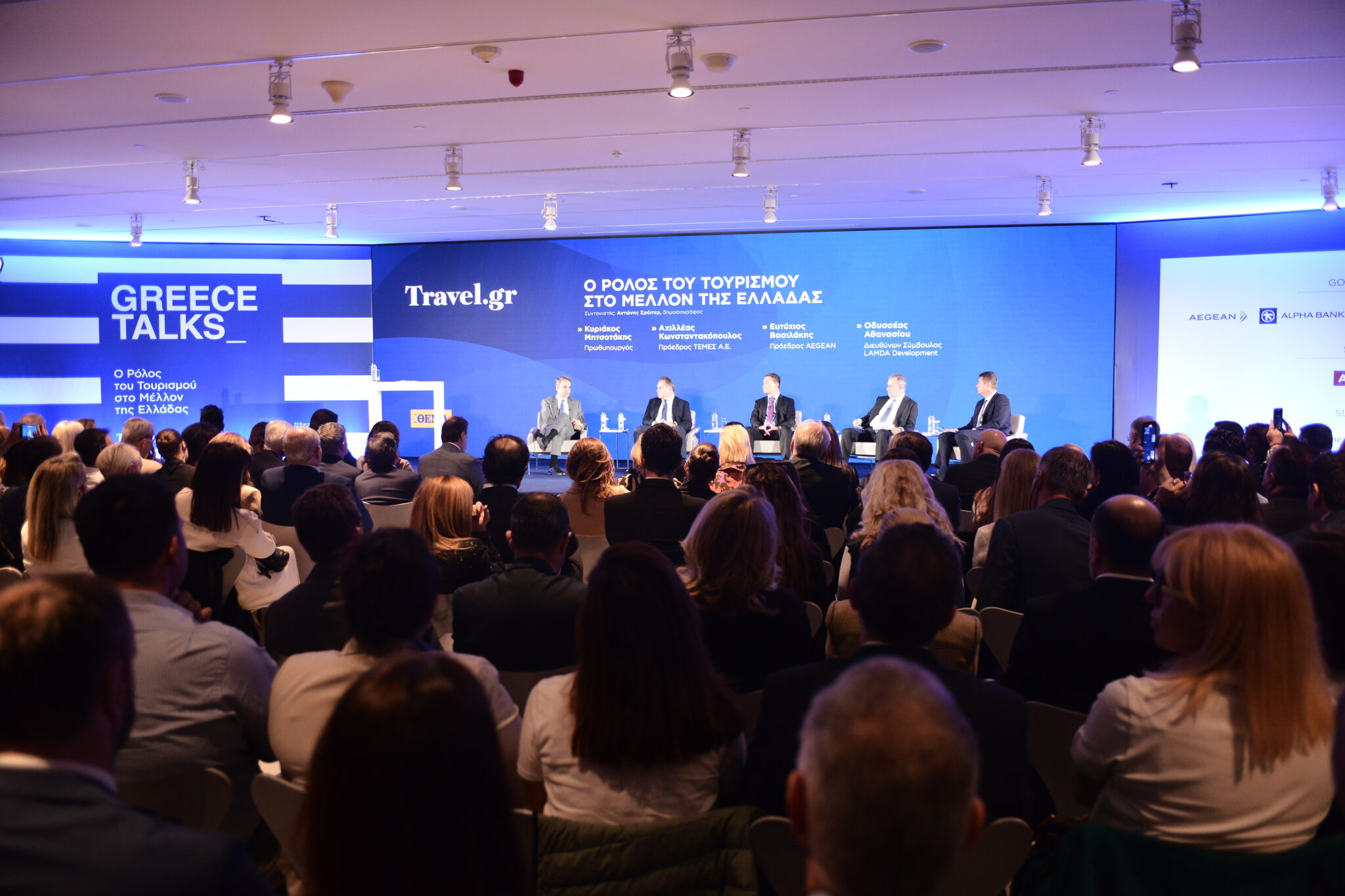A scintillating array of leading figures in architecture, museums and interior design recently addressed a Greek and international audience at the Stavros Niarchos Cultural Centre’s Lighthouse as part of the Greece Talks Conference organised by Proto Thema and Travel.gr. Honing into their deep knowledge, extensive experience and future-looking vision, they spoke about the changes they have been making over recent years to bring the best of Greece’s cultural attributes to the fore, with inherent respect for Greece’s varied cultural, natural and historical elements, careful study and the use of modern technology. Here we present their eye-opening and engaging talks.
Representing Culture in Museums
Anna-Vasiliki Karapanagiotou: the National Archaeological Museum Today and Tomorrow
Dr Anna-Vasiliki Karapanagiotou, the General Director of the National Archaeological Museum in Athens, shared enthralling stories of the National Archaeological Museum, which began with Eleni Tositsa who donated the land for the museum’s housing in 1866 shortly before her death. “The museum’s exhibits cover seven millennia, transcending the boundaries of Greece. It houses about 11,000 exhibits, from 7000 BC to around 330 AD, in the Roman era” she added.
In her talk, Karapanagiotou revealed the National Archaewological Museum’s new plan to become fully accessible to visitors with physical disabilities. “The question is how accessible the museum experience is to an increasing number of visitors. How attractive is a museum when it excludes people with vision, hearing, or mobility problems. The National Archaeological Museum is now becoming an inclusive museum. The new museum experience is being inaugurated next month, in a museum in which reading all the captions of all the exhibits would take 14 days.
“The new museum experience will include 40 podcasts that tell stories about the exhibits, while there are selected tours in sign language. Additionally, the museum’s rich photographic archive is being digitised,” the director added. “There are Braille labels for visitors with vision impairments. Meanwhile an application at the entrance and exit will allow one to send e-cards to friends even before leaving the museum.”
The museum director also focused on the use of social media to help promote the museum’s scope to a wider audience around the world. When asked about her initiative to “open up” the museum to social media and the methods of attracting more and younger visitors, she said: “Our systematic presence on social media started in October 2021. We are at a good level of followers on Facebook, and a year ago we joined Instagram. Perhaps that also played a role in the spectacular increase of physical visitors within the Museum,” she added and continued: “We also try to attract teenagers through experiential visit programmes. Teenagers are a challenging audience, and I believe the programme for the Antikythera Mechanism was attractive to them. Of course, we’re not only talking about communication. The National Archaeological Museum is above all a significant research centre for antiquity. It’s important to have an attractive presence, but equally important to continue the work of the great scientific tradition that exists here.”
On the museum’s expansion project, Karapanagiotou revealed at Greece Talks that: “Besides the extension of the museum, what concerns me is how this project will lead us to the museum of 2050, a sustainable and pioneering museum for its time.” Concluding, she mentioned that beyond the museum that will be created with the extension, it is vital “to do the best for the museum we have now, with its nearly 150 years of history and a globally significant collection.”
Eike Schmidt Presents the Glowing Uffizi Gallery Example
Eike Schmidt, who was put at the helm of the prestigious Uffizi Gallery in Florence a few years ago, impressed the audience with his account of how modernisation, the use of new technologies, renovations and boosting social media all helped to raise visitation to an incredible degree.
“I would like to start by mentioning a record. In 2022, the museum had 4 million visitors. This year so far, we already have 4.5 million visitors, and everything indicates that for the first time, we will be reaching 5 million visitors and perhaps, according to the trend, even go up to 5.3 million visitors in a single year!
“So, what accounts for this significant increase? We have been very active, I would say even ‘aggressive,’ in many areas such as our social communication and the implementation of new initiatives that started from the summer of 2020. Currently, the Uffizi Gallery is the most visited cultural monument in Italy, even more popular than the famous archaeological sites. The truth is, I didn’t expect that after the pandemic people would feel comfortable in an enclosed space, yet they preferred and prefer to come to us, although last year the archaeological sites also attracted a lot of people.”
What seems to have played a decisive role in the rapid development of the Uffizi Gallery and its increasing visitation is the fact that the museum’s management seems to have found a way to appeal to young people. As Schmidt mentioned in his speech, “One-third of the museum’s visitors in 2021 were under the age of 25. We can calculate this accurately from ticket sales. Our strategy from now on is to break the seasonality. The high-visit season has already been extended. Once it would have already ended by the end of October, but now it’s mid-November, and we still have a lot of people. Additionally, with some discounts for specific times of the day, we managed to have people throughout the day.”
Tapping into the mindset of younger generations proved an essential and highly useful act for Schmidt and his colleagues. “I think the most important thing was that we worked with young people to tap into what their tastes are. We started Tik Tok during the pandemic and thought we could really reach these kids. So we asked our children, our grandchildren, their classmates, our siblings, everyone. And we found out that young people might initially be hesitant to come to a museum, but they can eventually become very passionate museum visitors. Additionally, our interns are all very young and we often work with young influencers, even with chefs, which some may find eccentric. However, when talking about the new generation, eccentricity is the best way to find what they like.”
Finally, Schmidt spoke at the Travel.gr conference about the new type of glass casing used to protect the works of Botticelli, a glass so transparent, non-reflective and thin that it allows the viewer to feel like they have ‘entered’ the painting. This new intervention has now been extended to works by Caravaggio and Botticelli and will be expanded to other rooms of the museum. He closed with a special mention of the museum’s beautiful gardens, the renovation of which will be completed by 2030 and has been done almost exclusively with private funding and from the museum’s ticket sales.
Interior Design to Celebrate a New ‘Greekness’
Vangelis Bonios in Creative Dialogue with the Elements
Interior designer Vangelis Bonios, head of Studio Bonarchi with dozens of projects in the Greek islands, mainland, and Attica, focused his speech on the significant issue of Greekness, while also opening an intriguing discussion on how he and his team draw inspiration for each project.
“We Greeks feel that our sky is the bluest in the world. I think our thought is greatly determined by the clarity and tranquility of this line of the sky. How to exist in front of that?” Mr. Bonios wondered at the beginning of his speech, concluding with the big question: “What is Greekness, after all?”
To give an answer, he narrated a story from his stay to an accommodation in Imerovigli, Santorini, where someone had placed the image of a ballerina opposite the Caldera. “I spent the entire afternoon looking at the caldera and then at the ballerina, then back at the ballerina and then the caldera. In the end, in the morning at breakfast, I didn’t know whether I should be looking for a Greek dish or some Russian piroski.”
“We at Studio Bonarchi understand Greekness as our connection with our place and the creative dialogue with its memories,” Bonios underlined. “We did this at Kalesma in Mykonos, as well as in many other projects in the Greek islands.” The studio’s most recent project is the luxurious hotel unit odera in Tinos, where fundamental elements from the character of the island and tradition were incorporated into the hotel’s interior environment.
Through a series of unique photographs of accommodations exclusively designed by Studio Bonarchi, Bonios showed the audience, through images, what he and his team have set as the goal of their work: “I want to make every visitor feel the essence of Greekness. As Odysseas Elytis had said, ‘Greekness is a way of seeing and feeling things, whether in a grand moment or a humble one, whether at the Parthenon or with a lantern’.”
Architecture that Respects What Already Is
Thomas Doxiadis, architect and founder of doxiadis+, centred his talk at the Greece Talks event on the relationship between Greek architectural design and tourism. “We don’t need to create substance; it’s about perceiving what already exists. This essence lies in the Greek landscapes, in our land. The place itself is an architectural marvel; there’s a relationship between people and the environment that needs to be highlighted and developed,” Doxiadis said.
“We export beauty, and Greek design has done a great job in that process. On the scale of buildings and objects, things are going very well. The problem is with Greece on a larger scale. We create without a sense of legacy. It doesn’t mean that development should be uniform across all areas and places. We need a new model of coexistence. A prime example is Amanzoe, where we create a ready field and reconstitute the landscape and the space we work around,” he added, and concluded by saying, “Tourism must improve; you must study the old with humility to create the new fabric. We have reached great heights in Greece, but now our perspective must change. We need to do master planning that allows us to do something with respect for the land.”
Connecting to People to Heritage Through Light
“The Inspiration Behind the Lighting of the Acropolis” was the theme of the speech by Lighting Designer, Eleftheria Deko, at Greece Talks. “The function of lighting is to highlight a monument at night (as a symbol and as a tribute) or as a tourist attraction. The lighting underscores the monument’s history, or better yet, invites the monument itself to narrate its story to the passerby of the night, the traveller, the tourist.
“Whether the traveller stops to observe and admire it or simply casts a fleeting glance, this interaction with the monument leaves people with a light memory, like a pleasant fragrance, a touch, or an emotion. It connects the past with the present and the future, allowing this essence to travel through time, from ancestors to now. And this passage can only be made through Art, the personal quest for truth, the rhythmic call to an eternal struggle against barbarity, misery, ignorance, division,” the Lighting Designer noted in her talk.
Continuing her speech, she mentioned: “Light is a way to see not only the obvious but also the precious or the hidden. Each of us has a personal understanding of light, a personal allegory. Yet, we all agree that light connects us. In the process of studying the lighting of the Acropolis, we had to consider these interpretations, the philosophical views, and the connection of light with truth.”
“We passionately wanted to apply them to the lighting of our national symbol. From the beginning, we felt that lighting the Acropolis was not just a job – a project, but a journey. A philosophical and personal journey that, more than anything else, made us dive into the history and culture of our ancestors and rebirth our connection with them. Our intention was not just to place the right lights in the right positions but to dust off the memory, to make clearer the glasses through which we view the monument, to emphasize the whiteness of the marble as spiritual purity, as historical truth, as a masterpiece of architecture and art.”



